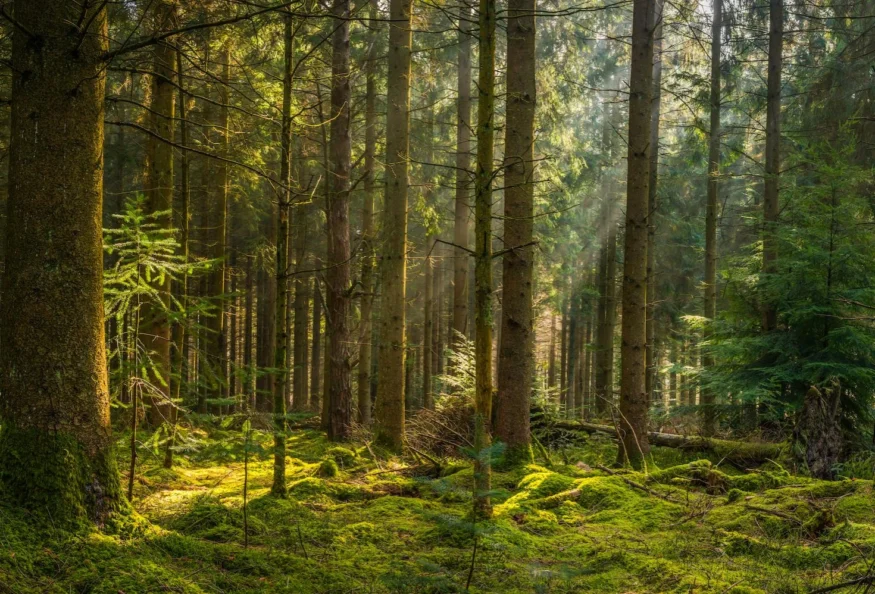Imagine that you go to the psychiatrist and what he prescribes for depression is “forest bathing”. You will think that he is the one who is not sane and not you. And you may panic or, if you are calm, you will ask him why not a psychotropic drug.
In this modern world where everything is instantaneous and fast: soups, soft drinks, cell phone messages, phone calls via the internet, trips in supersonic planes, among others. We want to solve everything with the productions of laboratories, when it comes to mental health.
But since psychiatrists discovered that curing with the word is as important, or more important, than with psychotropic drugs. And Dr. Sigmund Freud created Psychoanalysis. The options for healing the mind have changed to avoid the chemistry of pills and their well-known side effects.
I remember now my post-divorce depression and how something told me to walk and walk. And do not stop visiting the dearest friends and family. And I didn’t know then that walking in the woods was so good for mental health.
Now writing for the section “Desde la Red”, which every morning broadcasts the program “Estamos Tan Cerca”, of the Radio Angulo radio station, in the city of Holguin. I have found this information again on the social network Instagram. And I have given myself the task of investigating so that you, my dear readers, do not stop taking a bath in the forest.
I also remember when Mrs. Hillary Clinton lost in the US presidential elections in 2016 to the tycoon Donald Trump. After the dramatic defeat, when the polls gave her as the winner. She disappeared from public life immediately after a depression. And it was by chance when a runner met and greeted her in the New York woods.
At Harvard they propose their theory
Harvard, as in many aspects of life, has also studied forest therapy and one of its scientists Peter James. HMS associate professor of population medicine in the Department of Population Medicine at Harvard’s Pilgrim Health Care Institute. Used data from the Nurses’ Health Study (which has followed a legion of 121,000 women for decades) to explore the links between nature and health.
By combining medical records with satellite data. James and her colleagues found that women who lived in areas with the most green space were 12 percent less likely to die over an eight-year follow-up period. As described in a 2016 paper in Environmental Health Perspectives. This association was strongest in the case of cancer and respiratory disease mortality.
James, who is also an associate professor of environmental health at the Harvard T.H. Chan School of Public Health. Wondered why green spaces might reduce the risk of death. Was it because plants absorb pollutants from the air? Do people who live near parks exercise more?
By analyzing the underlying mechanisms and controlling for factors such as socioeconomic status. He and his colleagues were surprised to find that: neither physical activity nor pollution levels explained the decline in the death rate. Instead, mental health measured as diagnosed depression or antidepressant use was the most important factor identified. Social interaction played a minor but important role.
There is no pharmaceutical or precision medicine tool that can have the broad benefits of a forest.
The research adds to a strong body of evidence indicating that our brains benefit from being outdoors. Studies comparing participants’ mental health after spending time in natural environments with built environments have revealed physiological differences. Such as lower levels of salivary cortisol, a biomarker of stress, or lower activity in the brain regions involved in rumination.
A cycle of negative thoughts, between those who spent time in nature and those who did not. Even being in interior rooms with windows that allowed views of nature. Or that contained natural elements, such as plants, has been linked to cognitive benefits.
The idea that we’re hardwired to find solace in vegetation isn’t all that complex, says James. Who now uses Google Street View imagery and deep-learning algorithms to identify the exact components of nature.
Such as the proportion of trees, grass, or flowers in a given area, that influence health.
He points out that the value of green spaces is embedded in many aspects of our lives. From the price of real estate in the U.S. to SPA soundtracks with sounds of nature. “The truth is that we are nature,” he says. We didn’t evolve to be in a windowless room staring at a computer screen. These artificial environments stress us out. They force us to concentrate more than we want and deplete our cognitive function.”
The good thing about all this forest bathing is that it doesn’t come in a pill bottle. And will have no negative side effects, save for a sunburn or a mosquito bite.
So don’t be surprised if when you go to the mental health specialists’ office and after having your blood pressure. And heart rate taken they recommend you to walk through the green spaces near your home where you can walk safely and enjoy.
You know!
By: José Miguel Ávila Pérez
Translated by Radio Angulo
- Claudia Sheinbaum, Transformative Leadership - 3 de July de 2025
- International Rejection of New US Memorandum Against Cuba - 3 de July de 2025
- Cuba Denounces Opening of Detention Center in Florida - 3 de July de 2025

